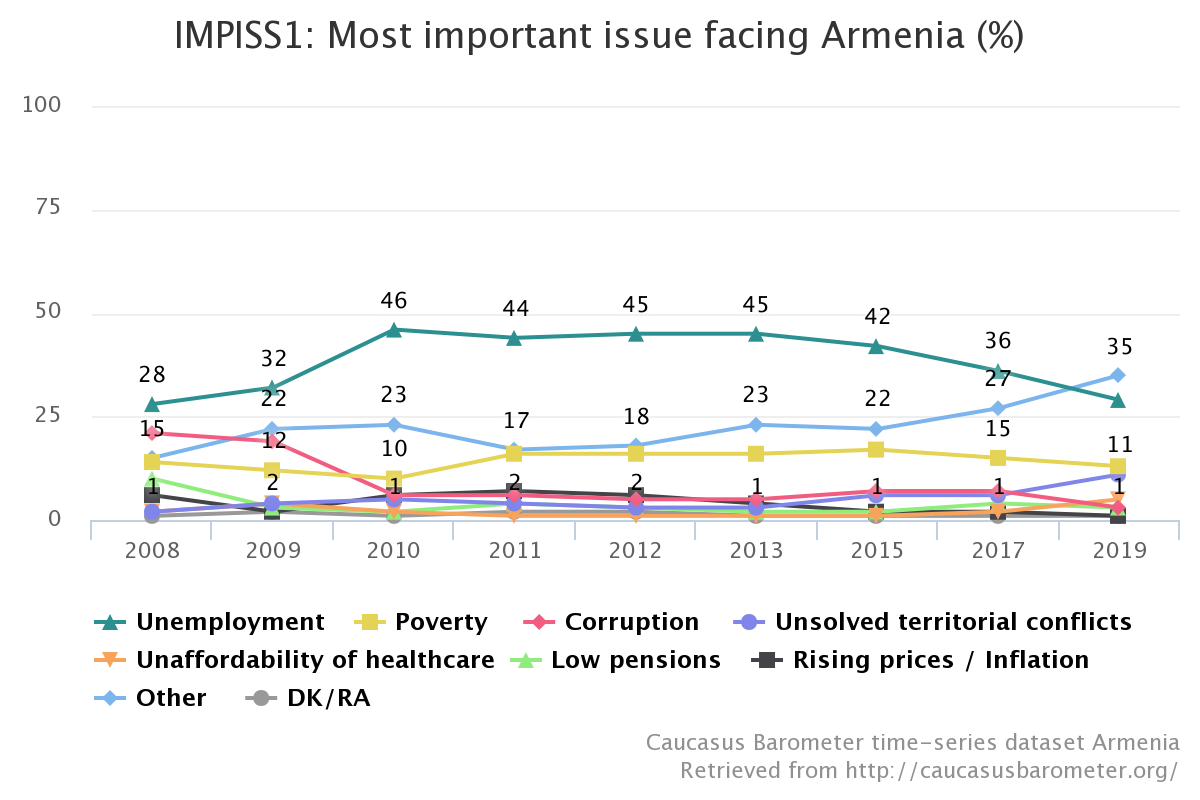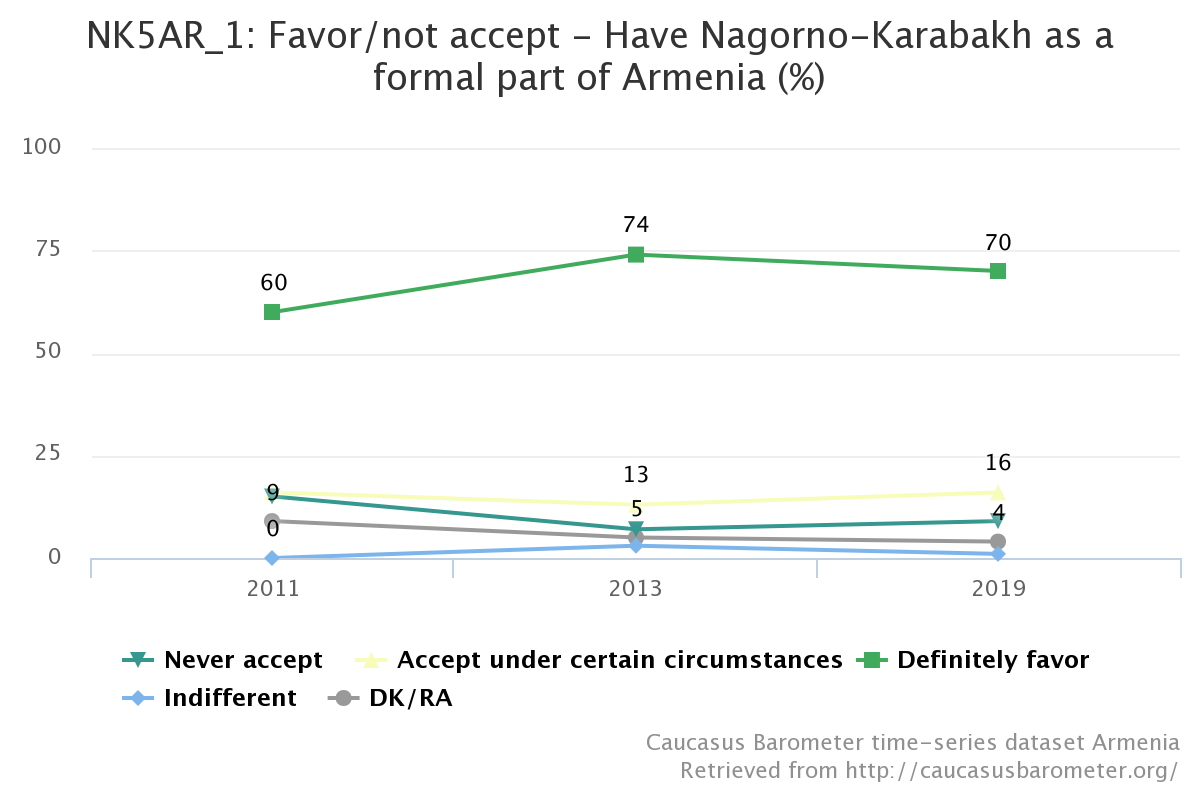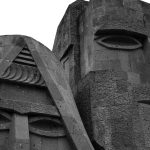Why Armenians Fled Karabakh: A Data Visualisation
The oldest conflict of the post-Soviet space has ended with the pending dissolution of the de facto Republic of Nagorno-Karabakh and the forced displacement of about 100,000 ethnic Armenians. What happened to one million Azerbaijanis during the 1990s, happened again to Karabakh Armenians in the last days. With neither peace achieved between the two Caucasian republics nor assurance that another turmoil would not erupt, the rivalry over Karabakh has ended with Azerbaijan’s revenge on Armenians rather than a long-standing peace agreement.
The international spotlight was on the thousands of Armenians arriving in Armenia proper, leaving their homes with just a few belongings. Pundits point out that Azerbaijan openly declared to fully secure the rights of its “citizens with Armenian origin” by providing a window of opportunities through reintegration in Karabakh. However, after Azerbaijan’s latest blitzkrieg, neither cultural autonomy nor ad hoc minority rights will be granted to potential returnees. Baku’s decision provides the main reason why Karabakh Armenians have decided to empty themselves Karabakh: they have no trust in Azerbaijani institutions. It also debunks the myth of multiculturalism in Azerbaijan, whose democratic status posits the country along with post-Soviet Russia and Belarus, both enemies of ‘the West’ due to their merciless aggression against Ukraine. Although some may rethink relations with Azerbaijan, geoeconomic interests will more likely drive ‘the West’ to continue to flirt with Aliyev and his autocratic regime. The European Union has defined Aliyev as a trustworthy partner, thereby exempting him from criticism for Karabakh’s wrongdoings.
If Karabakh was home to Armenians, were not Russian peacekeepers and the UN mission within Karabakh sufficient to grant security at the grassroots level?
CRRC Barometer provides a better explanation and eye-opening perspectives to such questions. In 2019, 95% of Armenians disagreed with having Nagorno-Karabakh as an autonomous entity within Azerbaijan, nor did they agree with having the region as part of Azerbaijan. 92% also rejected a shared-power administration between Armenia and Azerbaijan, while 70% favored formally integrating the Armenian entity into the Republic of Armenia.
This data coherently constructed the image of enmity that Azerbaijan resonated with, and still does, among Armenians. In 2019, 75% perceived Azerbaijan as the main enemy in the region, while 85% disagreed doing business with Azerbaijanis. One can easily assume that perceptions have not improved in the wake of the Second Karabakh War in 2020 and the events of September 2023. In fact, an analytical report conducted in 2022 by CRRC Armenia found 46% of Karabakh Armenians and 39% of Armenia-based citizens willing to have the Nagorno-Karabakh Republic as an Independent State.
 As I have written elsewhere, neither Azerbaijan nor Armenia have done much to unfreeze the relations between their respective populations whose older generations used to live side by side. Peace has never been an option, but an empty word for avoiding reconciliation between the two counterparts. The graphs below reveal an issue of trust of most Armenians toward politics and institutions: in 2109, only 38% trusted the Parliament and 52% trusted the local government. The 2018 Velvet Revolution led by the current Prime Minister, Nikol Pashynian, positively affected Armenians, whose trust in the executive government increased from 20% to 71%.
As I have written elsewhere, neither Azerbaijan nor Armenia have done much to unfreeze the relations between their respective populations whose older generations used to live side by side. Peace has never been an option, but an empty word for avoiding reconciliation between the two counterparts. The graphs below reveal an issue of trust of most Armenians toward politics and institutions: in 2109, only 38% trusted the Parliament and 52% trusted the local government. The 2018 Velvet Revolution led by the current Prime Minister, Nikol Pashynian, positively affected Armenians, whose trust in the executive government increased from 20% to 71%.
 Conversely, the Army seems to have a much higher level of trust. The myth of the Armenian Army probably stems from the legacy of the “united and nationwide” movement that Armenians embodied over Nagorno-Karabakh during the 1980s and 1990s. Despite Armenia’s military success in the First Karabakh War (1992-94), Armenians began to face the decades-long condition of “neither war nor peace,” which further ossified any deal with Azerbaijan over the fate of Karabakh. Critical voices were silenced, while Armenia’s political elites engaged in self-censorship of many civil society groups and the media (including independent outlets). Although escalations of violence were nothing new between the First and Second Karabakh War, Armenians in 2019 were not mainly preoccupied with the unsettled territorial issue with Azerbaijan.
Conversely, the Army seems to have a much higher level of trust. The myth of the Armenian Army probably stems from the legacy of the “united and nationwide” movement that Armenians embodied over Nagorno-Karabakh during the 1980s and 1990s. Despite Armenia’s military success in the First Karabakh War (1992-94), Armenians began to face the decades-long condition of “neither war nor peace,” which further ossified any deal with Azerbaijan over the fate of Karabakh. Critical voices were silenced, while Armenia’s political elites engaged in self-censorship of many civil society groups and the media (including independent outlets). Although escalations of violence were nothing new between the First and Second Karabakh War, Armenians in 2019 were not mainly preoccupied with the unsettled territorial issue with Azerbaijan.
 As we speak, Armenians are found rightly outspoken about an inducted ethnic cleansing of Nagorno-Karabakh from its Armenian heritage and population. Perhaps too soon, but critical perspectives are still missing, and lessons seem not learned yet. One of the most spoiling attitudes of Armenians toward the “Karabakh knot” was the lack of acknowledgment of the sorrow and painstaking decades that Karabakh Azerbaijanis had gone through. The Massacre of Khojali (26 February 1992) was not adequately discussed. In this respect, Armenian nationalism and ethnonationalist sentiments have played a degenerative role. The myth of Miatsum (Միացում) in particular – namely, an idea of augmented Armenia emerging out of the historically Armenian-inhabited regions, has not only refrained Armenians from coming to terms with a future of peace based on some concessions and compromises with Azerbaijan. It has also paradoxically fuelled Armenophobia among Azerbaijanis, both in the diaspora and Azerbaijan proper.
As we speak, Armenians are found rightly outspoken about an inducted ethnic cleansing of Nagorno-Karabakh from its Armenian heritage and population. Perhaps too soon, but critical perspectives are still missing, and lessons seem not learned yet. One of the most spoiling attitudes of Armenians toward the “Karabakh knot” was the lack of acknowledgment of the sorrow and painstaking decades that Karabakh Azerbaijanis had gone through. The Massacre of Khojali (26 February 1992) was not adequately discussed. In this respect, Armenian nationalism and ethnonationalist sentiments have played a degenerative role. The myth of Miatsum (Միացում) in particular – namely, an idea of augmented Armenia emerging out of the historically Armenian-inhabited regions, has not only refrained Armenians from coming to terms with a future of peace based on some concessions and compromises with Azerbaijan. It has also paradoxically fuelled Armenophobia among Azerbaijanis, both in the diaspora and Azerbaijan proper.
Unsurprisingly, hate speech and hatred policies against Armenians and Azerbaijanis in Azerbaijan and Armenia have never ceased inciting violence between the two groups of neighbors. When Azerbaijan depicts Armenia’s nationalism as “incurable”, its “Iron Fist” has been depicted as the only cure for the “Armenian sickness”. Moreover, Armenia accuses Azerbaijan of continuing the genocidal politics that Turkey had begun in 1915, finding support in Louis Moreno Ocampo’s words, who spoke of an unfolding genocide in Karabakh. As a matter of fact, Armenians were outspoken about their unpreparedness to coexist peacefully “with the Other”, as shown by the 2022 analytical report by CRRC Armenia.
In between, the legacy of Karabakh has been erased: Azeri IDPs will probably benefit from “the great return” and enable Aliyev to cement his position in the country and beyond. Karabakh Armenians will live scattered around Armenia instead, probably leaving their homes back in the past while their memories will circulate in vain.














